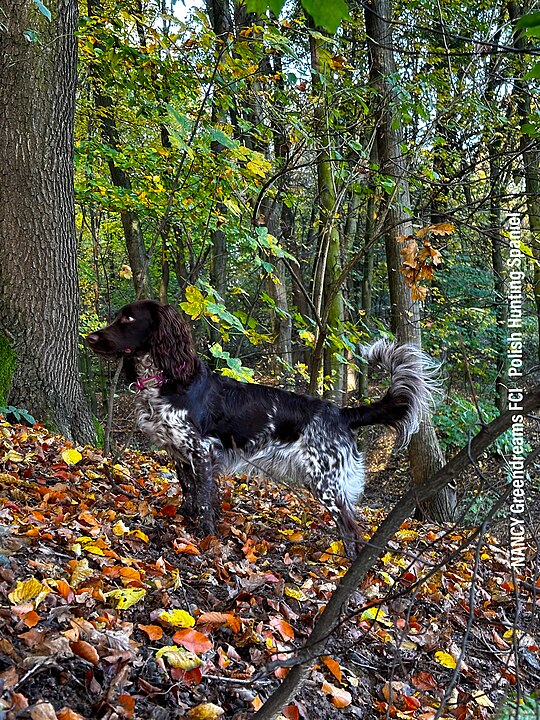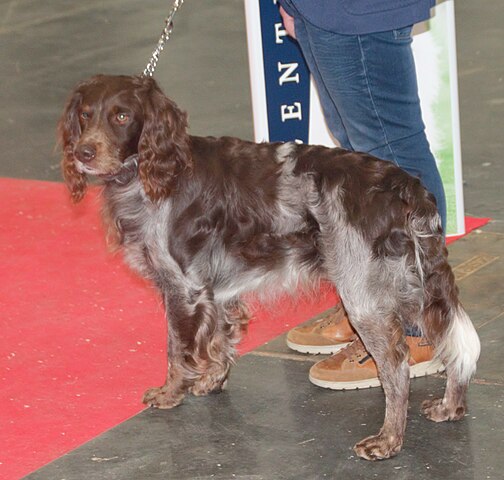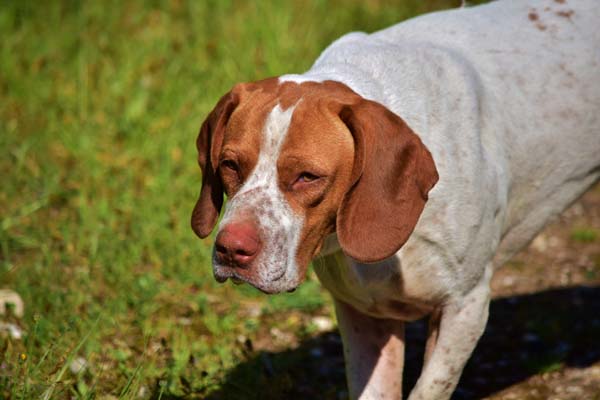Not only is the Bracco Italiano a clever and animated breed with a loving personality, but he is also one of the oldest pointing breeds. This Italian pointer is fantastic in the field and gentle in the home. He doesn’t tend to be overly rambunctious (unless out hunting) and can make a reliable companion and friend. Furthermore, he requires very little grooming aside from occasional brushing, baths and regular ear cleanings – the long ears are very prone to collecting dirt.
Bracci tend to be intelligent and easy to train – albeit sensitive, as long as the trainer is patient. As they tend to have an independent streak and distractable nature (they follow their nose frequently), a trainer must be strict about holding up rules while still keeping things interesting and fair. Bracci also tend to mature slowly, oftentimes taking up to three years before fully developed. This is worth noting when working with these dogs as they may retain puppy-ish behavior for longer than other breeds! They tend to love to please, so as long as things remain positive and fun they will have a good time! The breed needs a job to do, and obedience can serve as one of these jobs. Hunting is another great option, although other dog sports can be substituted if the owner isn’t a hunter.
The Bracco Italiano does have a ton of energy and requires plenty of exercise – more so than many breeds. A prospective owner must make sure they have time to dedicate not only to exercise daily, but also additional time for mental stimulation as well. This hunting breed does not make a good couch potato and instead must work, run, play and learn on a regular basis. Without these things they can become fairly bored and destructive – and the mental stimulation is often even more important than physical, so regular training is non-negotiable! One exercise caveat – while they are still young, this heavy-boned breed shouldn’t be over-exercised. When it comes to large puppies such as the Bracco, still-forming joints can be damaged by too much repeated or high-impact activity. 
All purebred and mixed breeds can suffer from health issues throughout their lives, but with purebred dogs it is more likely to know what health conditions might happen. Issues that are more commonly seen in the Bracco include hip and elbow dysplasia as well as eye problems such as entropian, ectropian and cherry eye. Responsible breeders seek to minimize the risk of these problems in their litters as much as possible. Make sure to buy a puppy from a breeder who does health tests and understands their lines! When healthy, many Bracci live around 11-12 years.
While many have been captivated by this breed, there are several shortcomings that must be examined before acquiring a Bracco Italiano. First, as might be imagined from their droopy jowls, the Bracco is a drooler! Second, big dogs require big pocketbooks when it comes to care. Both dog food and vet bills are much higher than with smaller breeds! Finally, this is a very social dog who does best when there is a person around the house most of the day. They don’t like to be left to themselves on a regular basis.
The Bracco tends to love children and gets along just fine with them in a household, often due to their gentle nature. In fact, aggression of any sort is not typical of this breed whatsoever. While they make poor guard dogs, some will alert to danger. This hunting breed also gets along with other dogs and pets – although smaller pets such as cats may need to be supervised around the more prey-driven members of the breed.



